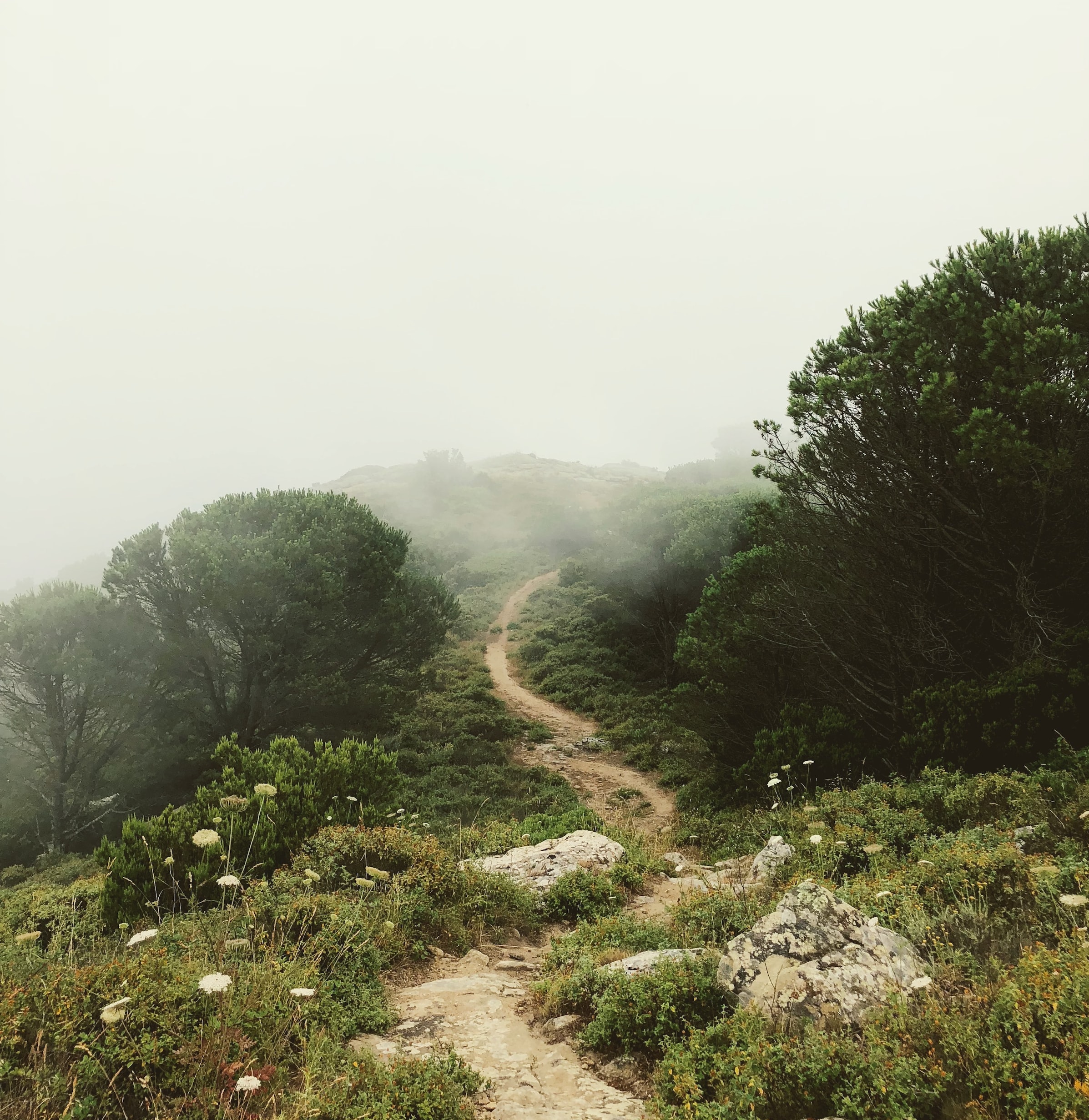Reflections on the Eightfold Path
In an excerpt from Tricycle’s newest online course, “Reimagining the Eightfold Path,” Stephen Batchelor describes why the path metaphor is so powerful and how we might approach this foundational Buddhist teaching today. The post Reflections on the Eightfold Path...

In an excerpt from Tricycle’s newest online course, “Reimagining the Eightfold Path,” Stephen Batchelor describes why the path metaphor is so powerful and how we might approach this foundational Buddhist teaching today.
By Stephen Batchelor Oct 19, 2022 Photo by Martino Pietropoli
Photo by Martino PietropoliMany years ago, when I was walking on the South Devon coastal path [in England] with my mother, I was suddenly struck by what it meant to walk on a path. For some reason, I became aware that while I was on a path, I was necessarily heading toward a destination. A path, all paths, have some sort of purpose. They get you somewhere. You have a sense of direction. At the same time, I realized that in walking along a path, I do so without impediment. There’s nothing getting in my way, no obstacles, which means that I’m able to get into my rhythm or pace. So a path is a space of freedom—a space where movement is possible.
A path is also something that connects us to a human, and even an animal, community because paths, particularly trails in the countryside, are there only because of people having gone before. It’s the tread of their feet that keeps the path open, even though they are long gone and away from view. At the same time, as we walk that path in their wake, we are serving to keep that path open for those who will follow.
When we talk of the eightfold path, it is helpful to reflect on the very metaphor of “path” itself, which we find in all traditions. What is distinctive about the eightfold path in Buddhism is that it is also described as a middle path, or a middle way. We could even translate that as a centered path or a central way. It’s understood as a path that avoids slipping into dead ends. In other words, the middle way is a path that actually will get us somewhere.
Of course many of the paths we follow in our lives are not actually paths at all because they don’t get us to where we would like them to get us. They don’t fulfill the desires that we hope they will. So often, we pursue a course in our lives, yet we find ourselves back where we started. So often, we go around in circles and keep meeting these dead ends. But the middle way and the eightfold path are also described with the metaphor of a stream. There’s something about this path that is dynamic, or flowing. The person who has entered the eightfold path is one who is said to have entered a stream. In other words, a stream is a flowing body of water that is held between its two banks that allows it that same sense of direction—that same sense of freedom of movement. In some ways, too, being water, [the stream—or path—is] something that nourishes society, community, and sentient beings.
For me, the eightfold path is part of a much longer “pathing” process that I call the “four tasks.” The four tasks describe in detail how this eightfold path arises. The first task is to embrace life, to fully understand the condition we’re in, but in a nonreactive way to pay attention with mindfulness, awareness, or sensitivity. That opens up a far greater awareness of how we react. We start noticing how often we encounter a situation, and it feels a certain way to us. That triggers a reaction: We either want it, we don’t like it, or we’re bored by it. So we begin to become aware of these reactive processes.
The second task is to let [our reactions] be or let them go, so we don’t get caught up and entangled in their narrative. Instead, we just remain mindfully conscious that this is how we’re reacting. That awareness of reactivity, that letting it be, rather than jumping on board and following, is what opens up the possibility of experiencing a nonreactive space. That nonreactive space is of the nature of nirvana itself. It’s the absence of greed, hatred, fear, or confusion. It may be momentary, but as we touch that openness, and that spaciousness, it makes us aware of our freedom to live differently—to not just be driven by our habits, but to respond to life situations in a way that’s not just a habitual reactive engagement with the situation, but one that allows for greater responsiveness. It’s here, [in this third task,] that the eightfold path begins.
The fourth task is to cultivate this path and to bring it into being. It’s not reducible simply to being a good meditator or to developing certain spiritual ideas, or to having certain mystical insights (although all of those things can well be part of this process). The eightfold path highlights very clearly that this practice is one that engages the totality of what it means to be human.
In understanding how this process of cultivating a path might work, there’s a discourse in the early Buddhist canon called the Bhavana sutta, the discourse on cultivation. [In it], the Buddha illustrates this process of cultivation with the example of a chicken and her eggs. Clearly, the Buddha paid attention to ordinary farming activities that he probably would have encountered throughout his life, and would have been aware that when a hen is sitting on eggs in her nest, she is slowly turning and moving them around to ensure each egg is the same temperature and has the same possibility of being warmed in such a way that the little chick can then break out of the shell. This analogy is presented as a way in which to work with these different bodies of practices.
I’m selecting the eightfold path, one of the ones mentioned in that discourse, to show that the order in which we traditionally might have been presented with these ideas is open to modification. Indeed, perhaps, in our time, we need to rethink some of the elements of the eightfold path to highlight those which have been made more marginal, and to reconsider how this path could best be configured for our time and our world today. As an experiment with this egg-moving metaphor, I’d like to suggest another way we could look at the eight branches of the path, starting with our perspective, what is sometimes called the right view, or our way of seeing ourselves in the world, and then seeing that perspective as what stimulates and opens up our imagination as we begin to move toward a response. [Then we move onto] how that imagination allows us to then engage ourselves with the tasks at hand through effort, through application itself, and how that can then lead us into a more refined mindfulness, or collectiveness, that enables us to be present and focused. And when we move into the actual response itself, we do so by communication, through our speech, voice, work, and those activities that really make our lives come fully alive—whether that work be one of a teacher, artist, carer, or businessperson. A person who feels a vocation for any particular way of life does so because that is what speaks to his or her needs most deeply. I feel that this way of living, outlined by these different branches, has, as its goal, in a way, the survival of life on Earth. And at our present time, this survival is not just about you, and me, and human beings, but all creatures whose lives have flourished on this planet, but whose lives are now understood to be under threat. So my sense of the eightfold path is that it allows this kind of thinking and questioning to have a framework and perspective.
♦
Adapted from “Reimagining the Eightfold Path,” Tricycle’s newest online course, which launches November 14. Learn more here.
![]()
Thank you for subscribing to Tricycle! As a nonprofit, we depend on readers like you to keep Buddhist teachings and practices widely available.
This article is only for Subscribers!
Subscribe now to read this article and get immediate access to everything else.
Already a subscriber? Log in.

 Tfoso
Tfoso 





























